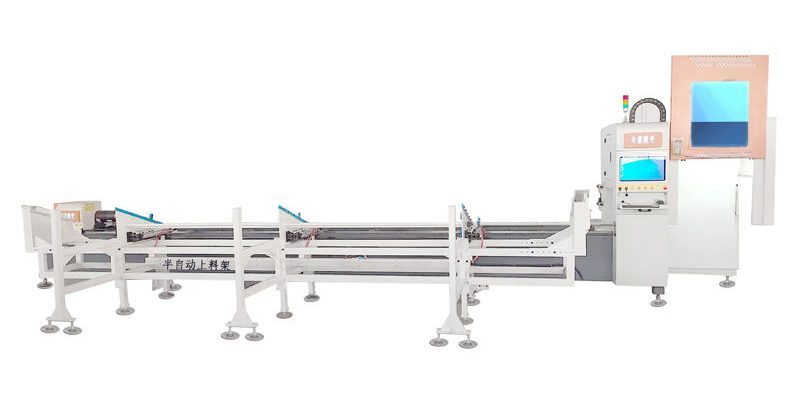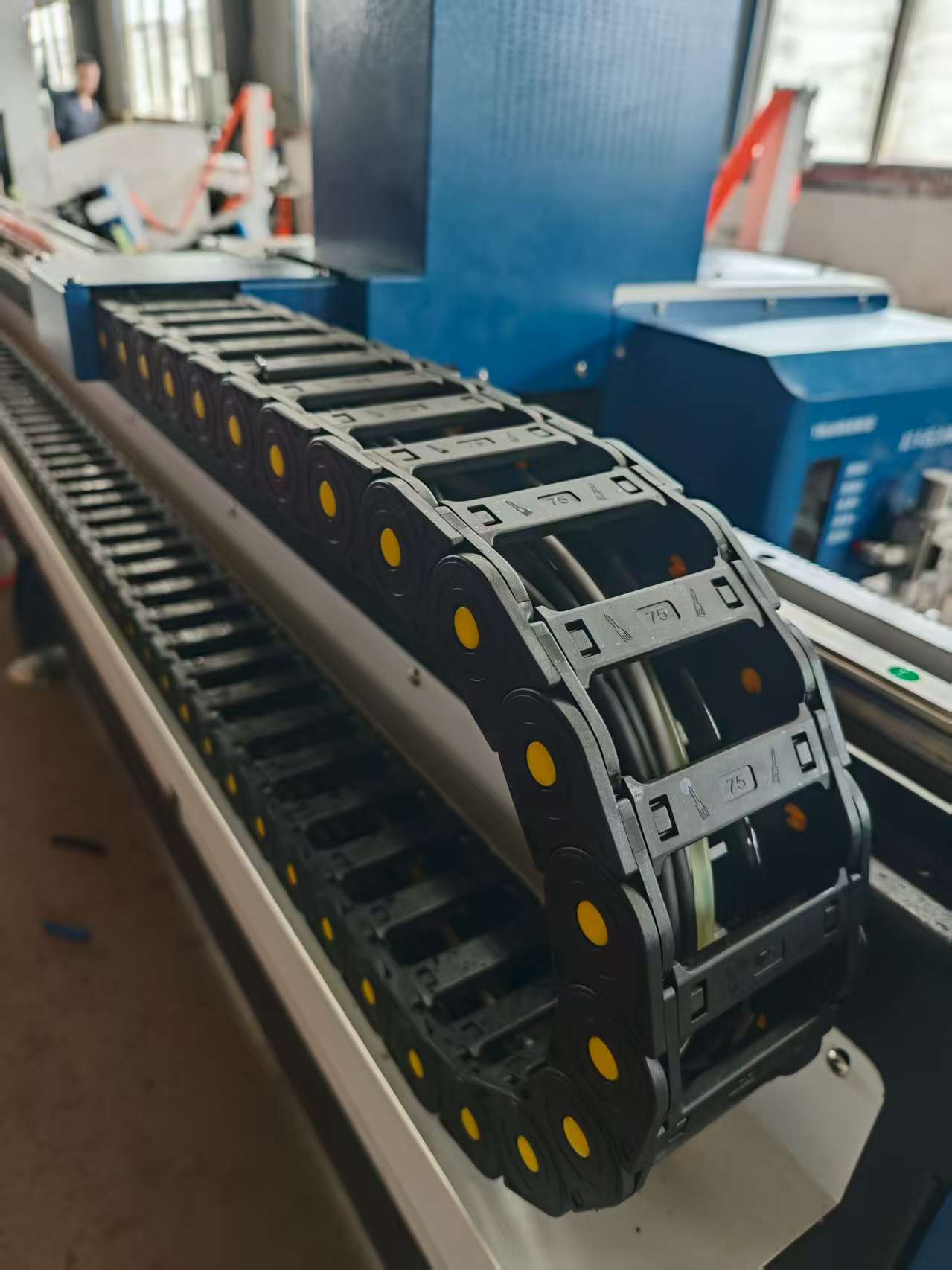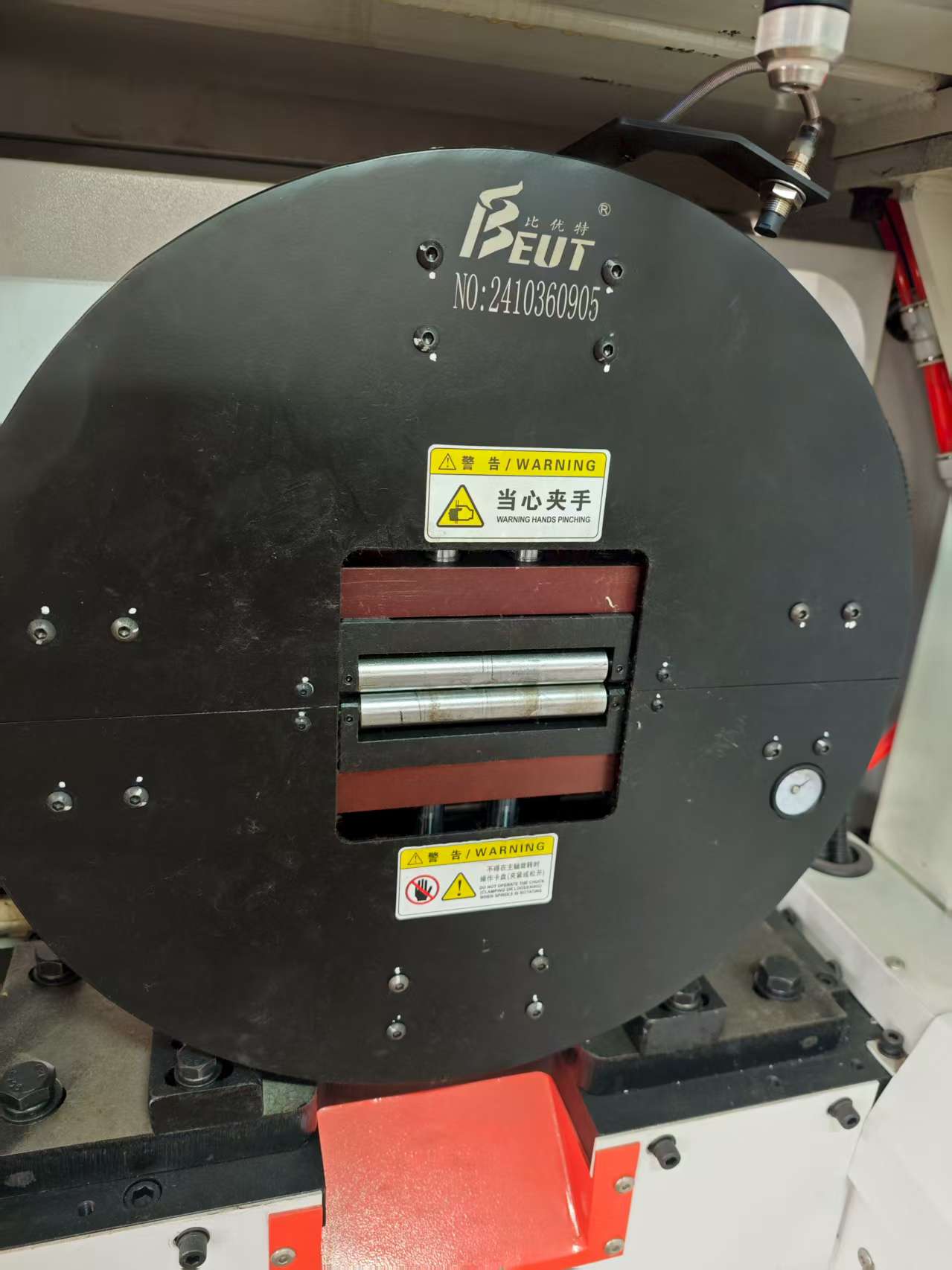In modern metal processing, laser tube cutting machines have become indispensable tools in industries such as automotive, aerospace, furniture, fitness equipment, construction, and energy. These machines are capable of cutting round tubes, square tubes, and irregular metal pipes with high precision, efficiency, and automation. However, with so many models and configurations available in the market, how do you choose the right laser tube cutting machine for your business?

Laser Tube Cutting Machine
ZS Laser breaks down the key factors you should evaluate: supports, chucks, cutting heads, nesting software, and automation systems.
Choosing the Right Support — The Foundation of Precision
Let’s start with the support system, which consists of the front and rear supports. Both play a decisive role in ensuring accuracy and stability when cutting long pipes.
Front support: The choice depends on the length of the workpiece. For longer pipes, a servo support is recommended. For higher precision, you can add guiding mechanisms to stabilize the pipe both vertically and horizontally, ensuring cutting accuracy.
Rear support: This depends on the material characteristics. Rear supports are available in pneumatic and servo types. Pneumatic supports hold the pipe at a fixed height and cannot adapt to pipe rotation. When cutting thin-walled or slender tubes, rapid rotation can cause bending and vibration. Servo supports avoid these issues and provide better stability.
Therefore, if your application requires high precision with thin or small pipes, always choose servo supports.

Laser Tube Cutting Machine Support
Choosing the Right Chuck System — Clamping Force and Flexibility
The chuck system determines how the pipe is held during cutting, directly impacting accuracy, speed, and safety. Common types include:
Pneumatic chucks: The most widely used; highly reliable, low failure rate, and good precision.
Electric chucks: Driven by a DC motor and screw mechanism. However, they often suffer from poor clamping force, inaccurate positioning, frequent jamming, and contamination issues. Not recommended in any conditions!
CNC chucks: Provide advanced control and greater flexibility, suitable for complex tasks.
Chuck Jaws:
Full-stroke chuck: Adjustable for a wide range of diameters without frequent jaw changes. For example, a 300mm chuck can clamp any pipe within 10–300mm, making it efficient and convenient.
Half-stroke chuck: Adjustable in segments (e.g., 100–200mm, 200–300mm). Requires frequent re-clamping if outside the range, lowering efficiency and accuracy.
Chuck Pressure Control:
Traditional systems use manual pressure adjustment via a regulator. Each pipe type requires a different pressure, which is inconvenient and prone to errors. Thin-walled pipes are especially vulnerable to deformation if pressure is too high.
For thin-walled tubes, it’s best to choose an electro-pneumatic proportional valve, which allows automatic pressure adjustment and saves settings into a database for future use—more accurate and user-friendly.

Laser tube cutting machine chuck
Choosing the Right Cutting Head — Matching Pipe Type and Thickness
The cutting head directly affects cut quality and versatility.
For thin-walled or irregular pipes (H-shaped, special profiles): Choose a sharp-nose cutting head. The smaller interference area ensures smooth cutting even with rotations on irregular profiles.
For standard pipes (round, square, rectangular, angle steel, channel steel): Choose a regular cutting head, which delivers clean edges and supports thicker material cutting.
Choosing the Right Nesting Software — Save Material and Costs
Many buyers overlook nesting software, but it is essential for batch processing. Without it, the machine cannot optimize material layouts.
Currently, no tube cutting machine can perform mixed-part nesting by itself. For tasks involving multi-part layouts, common-edge cutting, or structural materials like angle steel, channel steel, H-beams, and special profiles, dedicated nesting software is a must.
Choosing the Right Automation System — Boosting Efficiency
Since tube cutting often involves frequent loading and unloading, automation is critical in batch processing.
Automatic loading racks are essential for processing large volumes of tubes with consistent specifications.
If you frequently switch between different tube types, automation may not be necessary.
Loading racks come in semi-automatic (manual tube arrangement required) and fully automatic (can unbundle, separate, and feed tubes automatically).
Fully automated systems can be belt-driven or chain-driven, depending on project needs.
For large-scale, continuous production, a fully automated loading and unloading solution is the best choice.
How to Select the Best Laser Tube Cutting Machine
When choosing a laser tube cutting machine, consider the following:
Supports: For high-precision thin-walled pipes, choose servo supports.
Chucks: Pneumatic is standard; CNC for complex needs; avoid electric chucks.
Cutting heads: Sharp-nose for irregular thin pipes; regular for standard pipes.
Nesting software: Essential for batch production and material savings.
Automation: Full automation is key for high-volume production.
By carefully evaluating these elements, you can choose a CNC laser tube cutting machine that balances precision, efficiency, and cost.
Ready to Upgrade Your Metal Processing Capabilities?
ZS Laser offers a full range of laser tube cutting machines equipped with advanced chuck systems, servo supports, and intelligent automation solutions.
Contact us today for a free consultation and find the best solution tailored to your production needs!
 ZS Laser Equipment
ZS Laser Equipment


WhatsApp
Scan the QR Code to start a WhatsApp chat with us.